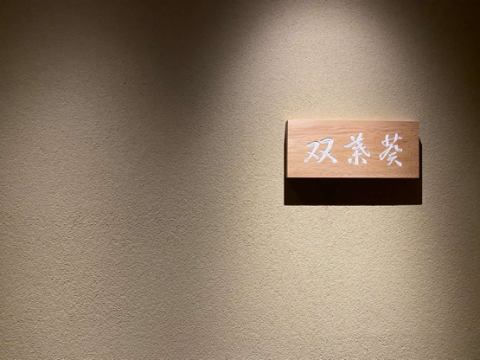- Top
- Futaba Aoi
Futaba Aoi
- The concept of this room began 22 years ago when I visited Kyoto's Nakamura Sotoji Komuten, a master sukiya architect.While listening to the story of the master who asked, he abandoned that "it is a world that is not as good as I am now."I am determined to learn everything and grow.I waited for the time to come.
In the meantime, my dreams gradually expanded, and after 20 years, I asked the master again in September 2019.With the promise of design and construction, construction started in October 2021, two years later.
Until the start of construction, they listened to various hopes, and there were dozens of exchanges with them, and even at the stage of construction, new proposals were proposed one after another from the construction shop. rice field.
The owner wants to prepare equipment suitable for such a wonderful space, so he is enthusiastic about selecting it, and orders high-grade items that are not found in Japanese hotels and inns, and arranges them while checking the feel, comfort, and design. I am.
The entrance, front room, Japanese-style room, Western-style room, washroom, Ginsen bathroom, toilet, closet, and "Futaba Aoi" are suites that give the atmosphere of a single house.
Owner, Takeshi Suruga
- Japanese-style room(Zashiki)
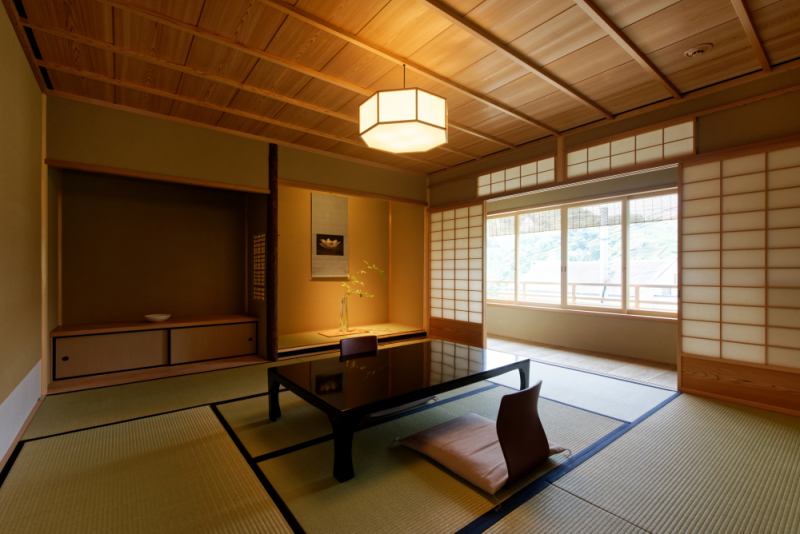 The master craftsman's work at Sukiya has been handed down with the three pillars of "materials," "tools," and "cleaning."We have always prepared the best materials that have been carefully examined and have proposed the most suitable materials to the owner.
The master craftsman's work at Sukiya has been handed down with the three pillars of "materials," "tools," and "cleaning."We have always prepared the best materials that have been carefully examined and have proposed the most suitable materials to the owner.
This time as well, the owner first chose the floor pillars of the Japanese-style room.Log with red pine skin.By choosing this, the whole picture of this tatami room was narrowed down.All are calm spaces finished with tea room dimensions.
Sukiya is based on the simple tea room design established by Senno Rikyu, and is characterized by its free and sophisticated taste.The handicrafts made by craftsmen, such as the base window knitted with reeds and wisteria vines, and the wide-rimmed finish, are unique to master craftsmen.It quietly adds a tasteful taste.The clay wall finish by the plasterer and the fittings such as shoji and sliding doors take in light and wind and bring comfort.The fusuma and shoji are given a delicate sense of Kyoto, and advanced technology can also be seen.There is also a stylish atmosphere such as the color of the floor stile, and the tatami room of Hanano's flexible tea room is designed with free flowers and settings, with the hospitality of "Flowers are in the field" in mind. It has become.
Underground window reeds,Wisteria vine
Kamoi Akasugi
Jibukuro hemlock silk pasted
Wide-rimmed chestnut finish
Ceiling Akasugi Nakamori board pasted,Rod rim ceiling
Pillar Kitayama cedar
Wide-rimmed ceiling with five bamboo blinds
Writing desk
- Western-style Room
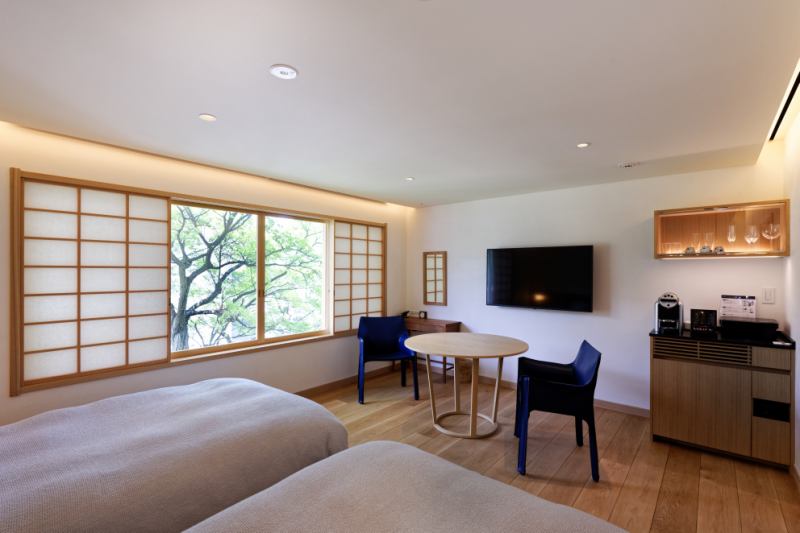 Western-style room with Simmons semi-double twin beds.Beside that, you can enjoy alcohol as a minibar.Although it is a Western-style room, the addition of shoji screens creates a sense of unity throughout the suite.
Western-style room with Simmons semi-double twin beds.Beside that, you can enjoy alcohol as a minibar.Although it is a Western-style room, the addition of shoji screens creates a sense of unity throughout the suite.
This shoji is the long-cherished wish of the owner, Yoshimura shoji.Architect Junzo Yoshimura has designed a shoji with a wide space between the stiles, finely tuned the stiles and frames, and unified the found dimensions of the kumiko and stile dimensions. With a design shoji screen, it shines a gentle light into the Western-style room.
The floor is made of Nara wood, and the walls are plastered. In the calm Western-style room, the bedside table and furniture such as tables and chairs for relaxing while drinking are selected from Cassina of Italy for modernity and sophistication. I will tell you casually.
The painting on the wall is a precious and strong presence of the old cloth of the Inca Empire (14th century), but it fits as if it were for this room.
Lumber for floor
Wall plastering
Shoji Shoji Yoshimura Shoji Frame Aomori Hiba
Minibar oak wood
furniture
Bed Simmons
Bedside table
Cassina (Italy / Milan) Marble
Piero Lissoni Design
Table Cassina:Chestnut nut material Ixsea R & D design
Chair Cassina(Museum of Modern Art New York Collection)
Mario Bellini
Bed spread Limonta
(A prestigious textile manufacturer in Costa Masnaga, Lecco region in northern Italy)
- Bathroom
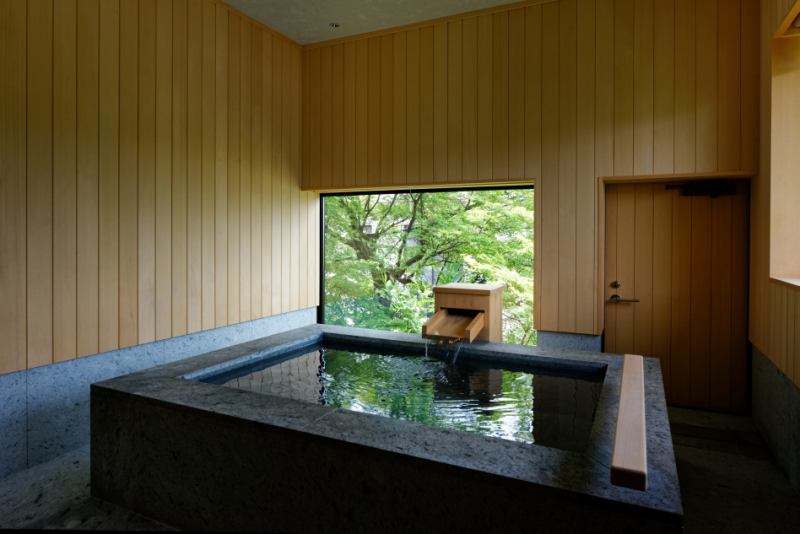 The bathroom, which is filled with Ginsen, is finished with Towada stone.Towada stone has an indescribable beauty in the color of the stone applied to the hot water, and is characterized by a sticky feel.Hiba, which is distributed in the Tohoku region, is pasted on the wall, and the autumn leaves of a large tree spread out from the window, and while bathing in hot water, the fresh green of early summer and the autumn leaves of autumn entertain the eyes.
The bathroom, which is filled with Ginsen, is finished with Towada stone.Towada stone has an indescribable beauty in the color of the stone applied to the hot water, and is characterized by a sticky feel.Hiba, which is distributed in the Tohoku region, is pasted on the wall, and the autumn leaves of a large tree spread out from the window, and while bathing in hot water, the fresh green of early summer and the autumn leaves of autumn entertain the eyes.
Ceiling cold water coating
wall Hiba siding
Bathtub Towada Ishibari
Rain shower grohe(Italy)
- bathroom
 The washroom has a sophisticated design so that you can relax in the morning and after the hot water.The washbasin of limestone, which is a natural stone, has two white circular balls by German Cardiby.The chair is made by Ritzwell.Dental care products are made by Marvis, Italy.As for the amenities, we also prepared the ones made by Ferragamo of Italy.
The washroom has a sophisticated design so that you can relax in the morning and after the hot water.The washbasin of limestone, which is a natural stone, has two white circular balls by German Cardiby.The chair is made by Ritzwell.Dental care products are made by Marvis, Italy.As for the amenities, we also prepared the ones made by Ferragamo of Italy.
The mirror is a custom-made product from Bali designed by Kyo Inaba.Lighting using special Japanese paper from Nakamura Komuten emits soft light.And above all, I searched around and asked for a bathrobe.A product made by the Turkish brand Hammam, which has been evaluated as a purveyor to luxury hotels and spas around the world.Its feel is exceptional and you can be assured of a comfortable stay.
Washbasin Natural stone Limestone
Hand wash enamel steel plate enamel(Germany)
Callan Grohe(Italy)
floor Tiled
wall Stucco
Bathrobe hammam(Turkey)
- Entrance
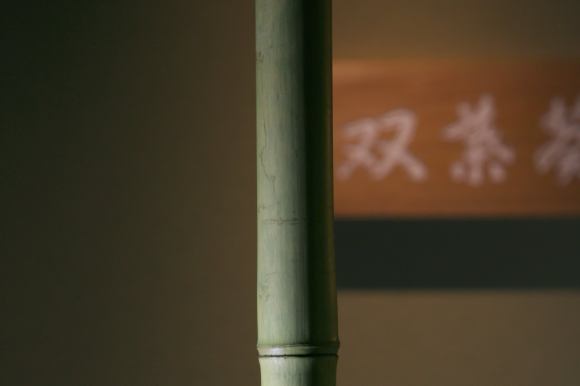 The interior entrance of the stylish lattice door with red cedar on the bamboo stile tells us that this is a special space.You can see the nameplate of the guest room, "Aoi Futaba" through the lattice door, and you are invited to a special space.There is an entrance door via the lattice door.The entrance door is made of red cedar and silk.The floor is made of Nara wood.Tosawa paper is pasted on the ceiling.
The interior entrance of the stylish lattice door with red cedar on the bamboo stile tells us that this is a special space.You can see the nameplate of the guest room, "Aoi Futaba" through the lattice door, and you are invited to a special space.There is an entrance door via the lattice door.The entrance door is made of red cedar and silk.The floor is made of Nara wood.Tosawa paper is pasted on the ceiling. - Front chamber
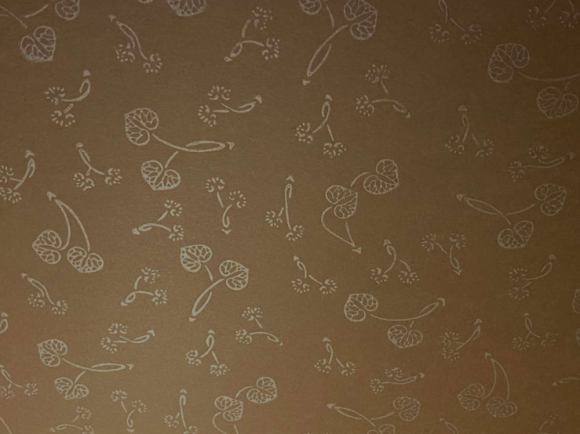 The ceiling of the front room, which enters the Japanese-style room (all according to the dimensions of the tea room), is a beautiful Kyo-style sewn pattern carved on the woodblock.The pattern is Aoi Futaba.It is a silver Futaba Aoi made by mixing Unei (Kira) with glue and pressing it against paper with a woodblock to make a pattern.The name of the suite room comes from this Karagami pattern.
The ceiling of the front room, which enters the Japanese-style room (all according to the dimensions of the tea room), is a beautiful Kyo-style sewn pattern carved on the woodblock.The pattern is Aoi Futaba.It is a silver Futaba Aoi made by mixing Unei (Kira) with glue and pressing it against paper with a woodblock to make a pattern.The name of the suite room comes from this Karagami pattern.

